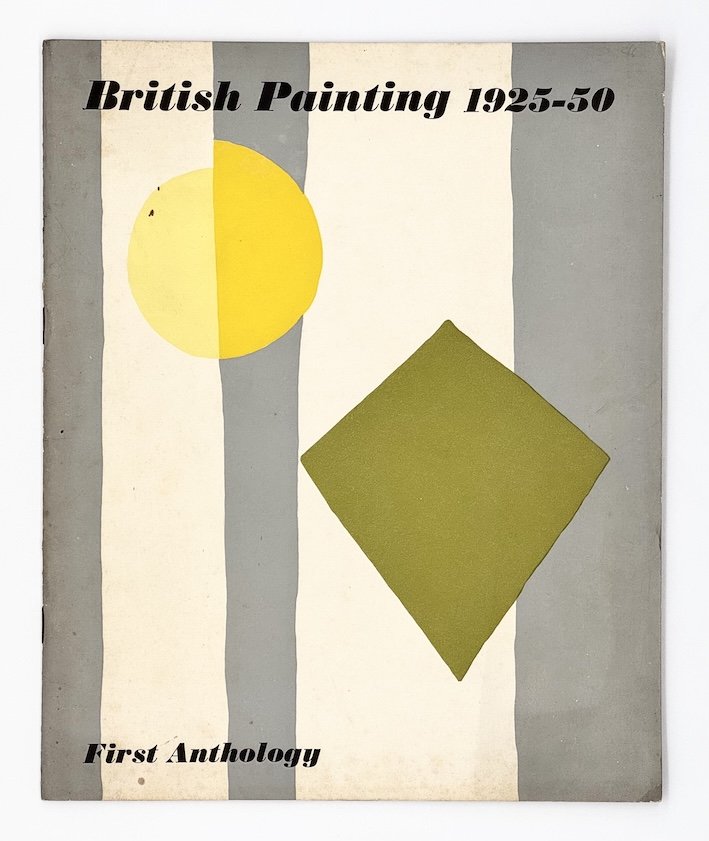Monthly Mingei special March 1941 Issue on the Kurashiki female workers dormitory.
Monthly Mingei special March 1941 devoted to the Mingei Association’s plan to build and furnish a dormitory for female workers at a nylon spinning factory in Kurashiki, Japan.
Includes a foldout with 5 woodblock prints by Serizawa Keisuke depicting the interior and exterior of the proposed dormitory, and examples of sashiko embroidery.
The issue opens with a statement declaring that, “the problem of the daily lifestyle of female labourers” represents the Mingei Movement’s first major undertaking to become a powerful new cultural movement for the purpose of constructing a new cultural order, by means of actively integrating with aspects of present-day society.
As Kim Brandt argues in her book, ‘Kingdom of Beauty: Mingei and the Politics of Beauty in Imperial Japan’, “By aestheticising the seikatsu - or the objects , architecture , gestures , and routines of dormitory life - for teenage girls working at a nylon spinning factory , the Mingei Association proposed not only to resolve the basic contradictions underlying the fascist ideal of Japanese society , but also to ensure the managed hyperproductivity that was arguably its ultimate end. In this context , seikatsu bunka became a way to suggest a beautiful , native discipline of maximal production and minimal consumption that would smoothly integrate city and country , industry and agriculture , work and leisure, as well as women’s roles as wage labourers and as wives and mothers.”
Title: Monthly Mingei
Language: Japanese
Publisher: Mingei Association of Japan
Publication Date: March 1941
Format: soft cover
Pages: 147 pages, foldouts and adverts
Stock Number: RB03378-5
Monthly Mingei special March 1941 devoted to the Mingei Association’s plan to build and furnish a dormitory for female workers at a nylon spinning factory in Kurashiki, Japan.
Includes a foldout with 5 woodblock prints by Serizawa Keisuke depicting the interior and exterior of the proposed dormitory, and examples of sashiko embroidery.
The issue opens with a statement declaring that, “the problem of the daily lifestyle of female labourers” represents the Mingei Movement’s first major undertaking to become a powerful new cultural movement for the purpose of constructing a new cultural order, by means of actively integrating with aspects of present-day society.
As Kim Brandt argues in her book, ‘Kingdom of Beauty: Mingei and the Politics of Beauty in Imperial Japan’, “By aestheticising the seikatsu - or the objects , architecture , gestures , and routines of dormitory life - for teenage girls working at a nylon spinning factory , the Mingei Association proposed not only to resolve the basic contradictions underlying the fascist ideal of Japanese society , but also to ensure the managed hyperproductivity that was arguably its ultimate end. In this context , seikatsu bunka became a way to suggest a beautiful , native discipline of maximal production and minimal consumption that would smoothly integrate city and country , industry and agriculture , work and leisure, as well as women’s roles as wage labourers and as wives and mothers.”
Title: Monthly Mingei
Language: Japanese
Publisher: Mingei Association of Japan
Publication Date: March 1941
Format: soft cover
Pages: 147 pages, foldouts and adverts
Stock Number: RB03378-5
Monthly Mingei special March 1941 devoted to the Mingei Association’s plan to build and furnish a dormitory for female workers at a nylon spinning factory in Kurashiki, Japan.
Includes a foldout with 5 woodblock prints by Serizawa Keisuke depicting the interior and exterior of the proposed dormitory, and examples of sashiko embroidery.
The issue opens with a statement declaring that, “the problem of the daily lifestyle of female labourers” represents the Mingei Movement’s first major undertaking to become a powerful new cultural movement for the purpose of constructing a new cultural order, by means of actively integrating with aspects of present-day society.
As Kim Brandt argues in her book, ‘Kingdom of Beauty: Mingei and the Politics of Beauty in Imperial Japan’, “By aestheticising the seikatsu - or the objects , architecture , gestures , and routines of dormitory life - for teenage girls working at a nylon spinning factory , the Mingei Association proposed not only to resolve the basic contradictions underlying the fascist ideal of Japanese society , but also to ensure the managed hyperproductivity that was arguably its ultimate end. In this context , seikatsu bunka became a way to suggest a beautiful , native discipline of maximal production and minimal consumption that would smoothly integrate city and country , industry and agriculture , work and leisure, as well as women’s roles as wage labourers and as wives and mothers.”
Title: Monthly Mingei
Language: Japanese
Publisher: Mingei Association of Japan
Publication Date: March 1941
Format: soft cover
Pages: 147 pages, foldouts and adverts
Stock Number: RB03378-5




































